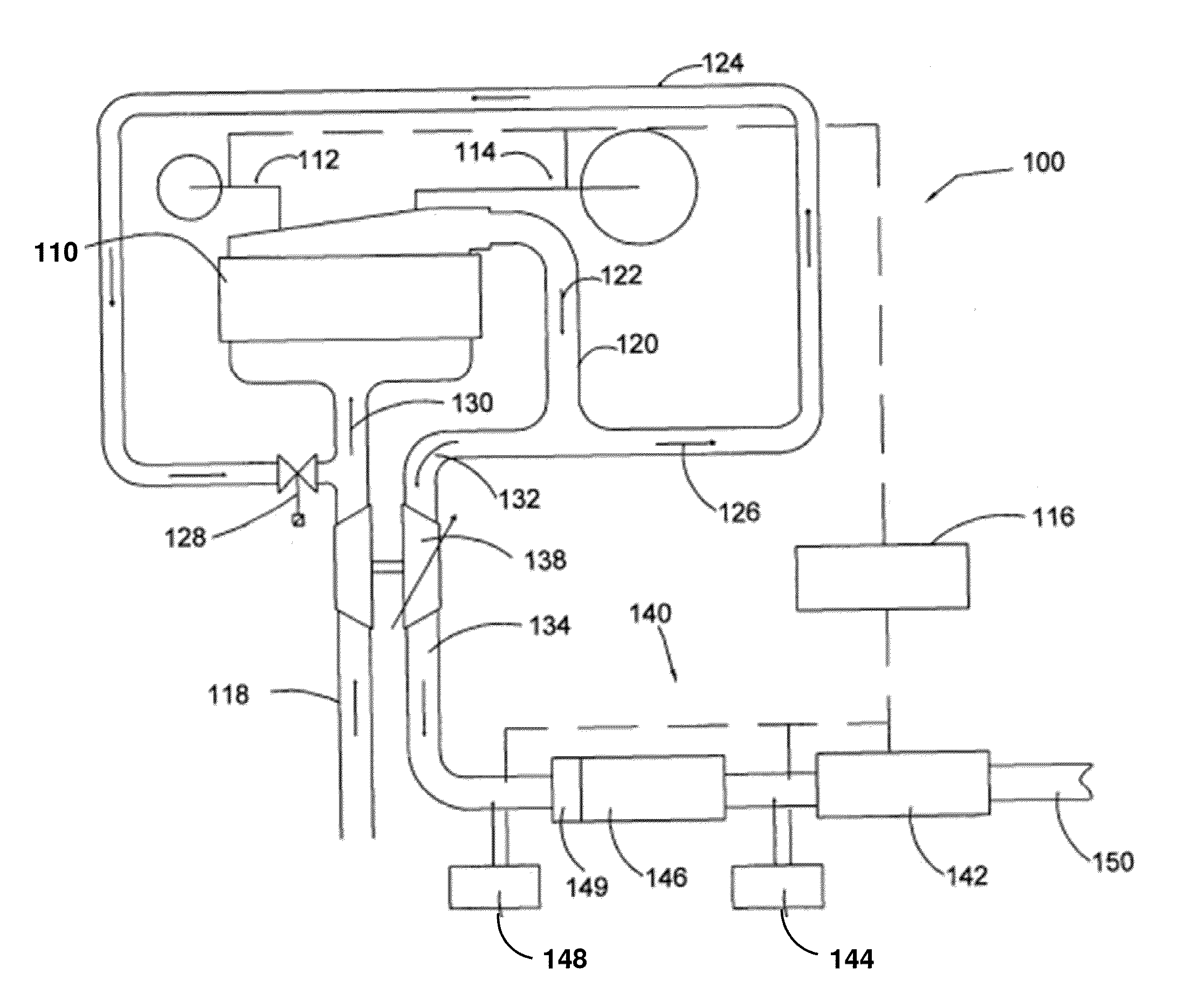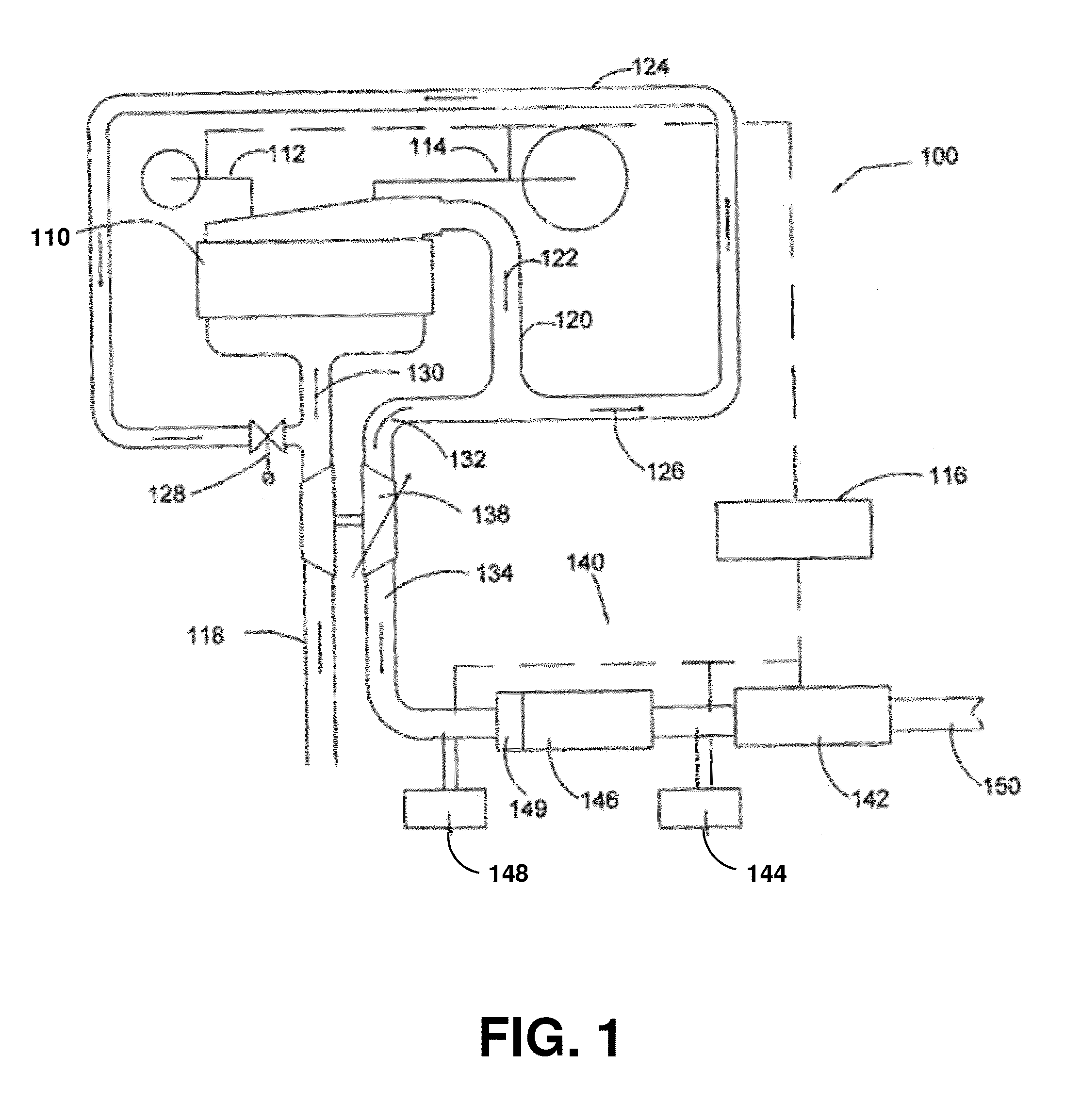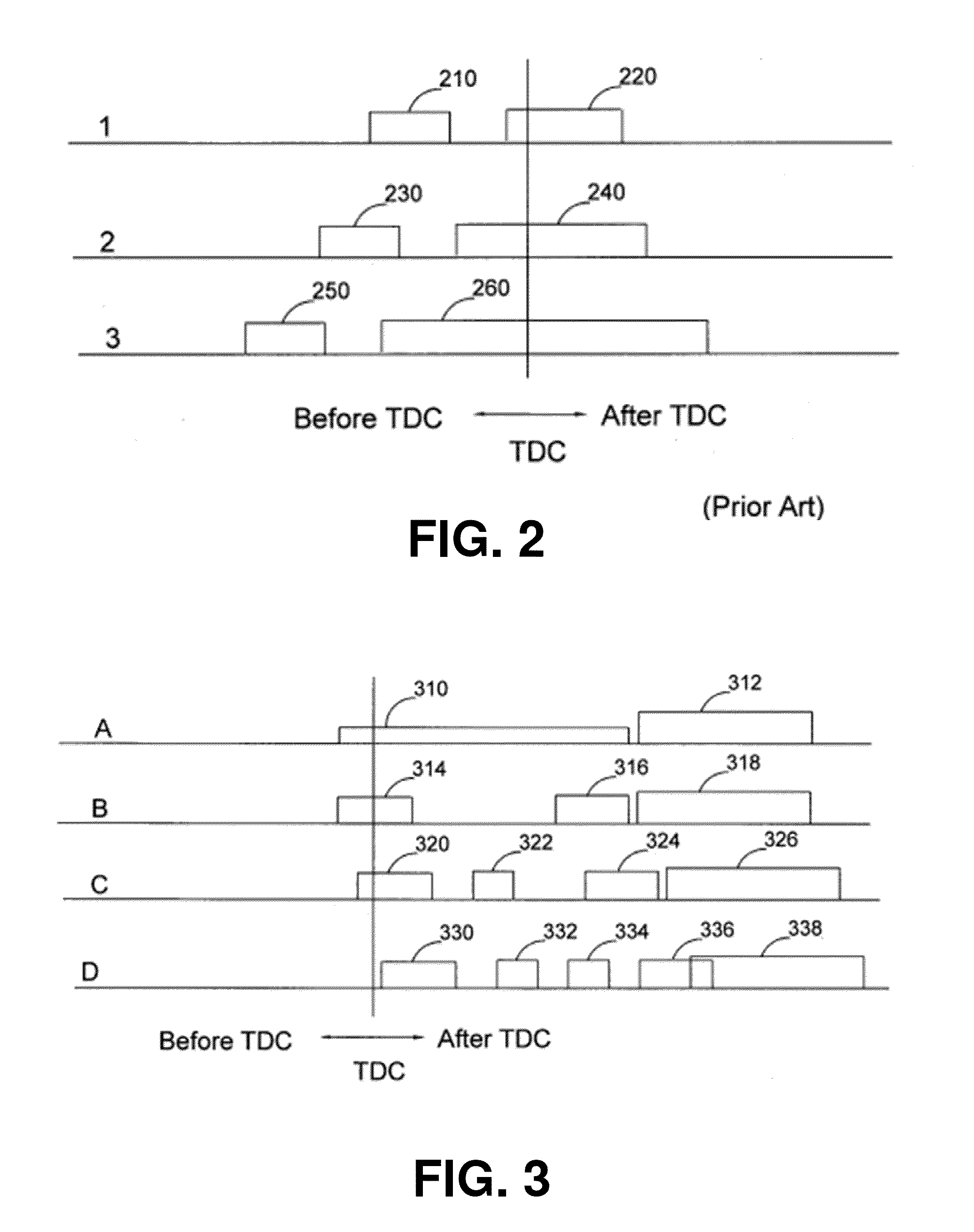Method Of Controlling A Direct-Injection Gaseous-Fuelled Internal Combustion Engine System With A Selective Catalytic Reduction Converter
- Summary
- Abstract
- Description
- Claims
- Application Information
AI Technical Summary
Benefits of technology
Problems solved by technology
Method used
Image
Examples
Embodiment Construction
)
[0029]FIG. 1 shows a schematic view of a direct-injection gaseous-fuelled internal combustion engine system comprising an exhaust after-treatment subsystem and an exhaust gas recirculation loop. Herein “direct-injection” is used to refer to the injection of fuel directly into the combustion chamber of an internal combustion engine, which is an approach that is technically distinct from engines that inject fuel into an engine's intake manifold or into the intake ports on the manifold side of the engine's intake valves. With direct-injection engines the fuel can be injected later in the engine cycle, thereby avoiding fuelling and compression ratio limitations associated with avoiding engine knock (“pre-mature detonation of the fuel”). Conversely, this generally allows direct-injection engines to employ higher compression ratios, and achieve higher efficiencies and power outputs compared to other engines with the same displacement. The disclosed method can be used with engines that in...
PUM
 Login to View More
Login to View More Abstract
Description
Claims
Application Information
 Login to View More
Login to View More - R&D
- Intellectual Property
- Life Sciences
- Materials
- Tech Scout
- Unparalleled Data Quality
- Higher Quality Content
- 60% Fewer Hallucinations
Browse by: Latest US Patents, China's latest patents, Technical Efficacy Thesaurus, Application Domain, Technology Topic, Popular Technical Reports.
© 2025 PatSnap. All rights reserved.Legal|Privacy policy|Modern Slavery Act Transparency Statement|Sitemap|About US| Contact US: help@patsnap.com



